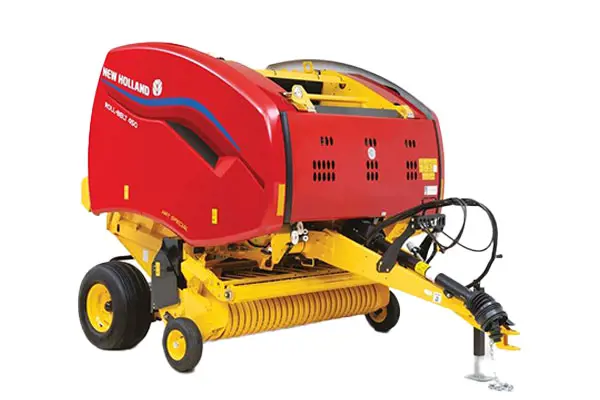New Holland Round Baler Buyer's Guide
Tags : new-holland-landing | round-baler |Summary of the Video Script:
Neil from Messick’s gives an in-depth walkthrough of the different New Holland round baler models available on their lot, highlighting how seemingly similar machines can vary significantly in features, capabilities, and price. He explains that while all models share core qualities like local design, engineering, and reliable parts support, they differ in build size, configurations, and intended use cases.
Starting with the RB450 Utility Plus, a compact, economical option for small-scale or hobby farmers, Neil progresses through more advanced models like the RB450 Silage Special, CropCutter, and Bale Slice, each adding functionality such as wet hay handling or internal cutting systems. He then covers the Pro-Belt 450, a heavy-duty, high-capacity machine built for demanding operations, and concludes with the RB560, a 5x6 baler suited for larger bales and farms with equipment to handle them.
The video emphasizes the importance of choosing the right baler for your specific needs and highlights the role of knowledgeable sales staff in guiding customers to the right choice.
450 Utility Plus

4 X 5, Net Only, 1.5M | 4 Bar Pick-Up, Manual Lift Pick-Up, Pick-Up Wheels, 11L-14 x 6 PR Rib Tires, Bale Ramp, MRT Laced Belts, 540 PTO, Clevis Hitch
450 RC

4 X 5, Rotor Cut, Silage Special, Net Wrap, Bale Ramp, 2.07M Rotary SuperFeed HD Pick-Up, Premium Endless Belts
450 SN

4 X 5, Silage Special, Net Wrap, Bale Ramp, 1.8M Active Sweep HD Pick-Up, Premium Endless Belts
450 SL

4 X 5, Bale Slice, Silage Special, Net Wrap, Bale Ramp, 1.8M Active Sweep HD Pick-Up, Premium Endless Belts
Roll-Belt Series

OUTSTANDING CAPACITY, DENSITY & INNOVATION
More Articles

Field Sprayer Maintenance Tips
Hi, David from Messick's here with today's three-minute Thursday. Today we're going to talk about some helpful hints and tricks that'll help you with your sprayers out in the field.

CUTTING MORE OIL FILTERS - Case/New Holland VS. STP
Today, we're going to go through our third filter cutting that we've done using a new Holland oil filter. This would be the most common oil filter in the new Holland system. Then we're intentionally choosing a really inexpensive filter to compare it to this time

3 Different Types of PTO Yokes
There are actually several types of PTO shafts down here. The end that hooks onto your tractor can be engineered in a couple of different ways, and there's some differences when it comes to service and maintenance, and also the angle that that shaft can run at in relation to your implement. So today, we're going to go and talk about PTO shafts. What I have here is the most common type of PTO shaft. This is called a yolk joint. A yolk joint is going to have two U-shaped yolks that go 90 degrees to one another with a cross that goes across the middle that supports them. Now those are going to move very freely when they're in line with one another, and they can rotate around their respective axes. But when they start to be off center from one another, you can get some chattering motion that you're going to notice. And you'll notice that in your implements, when you take your three-point hitch, say the whole way down, or you're making a headland turn, and your tractor is running at a hard angle from your implement, you'll start to hear a chatter from your yoke joints. They'll start jumping around a little bit. That noise that you're hearing when it gets to those more extreme angles is that shaft fighting as it goes around, and over time, it'll start to wear out the cross piece that sits in the middle of that joint.










